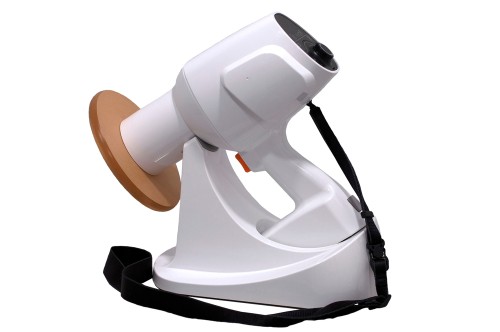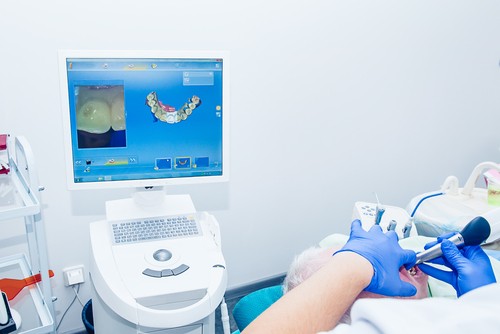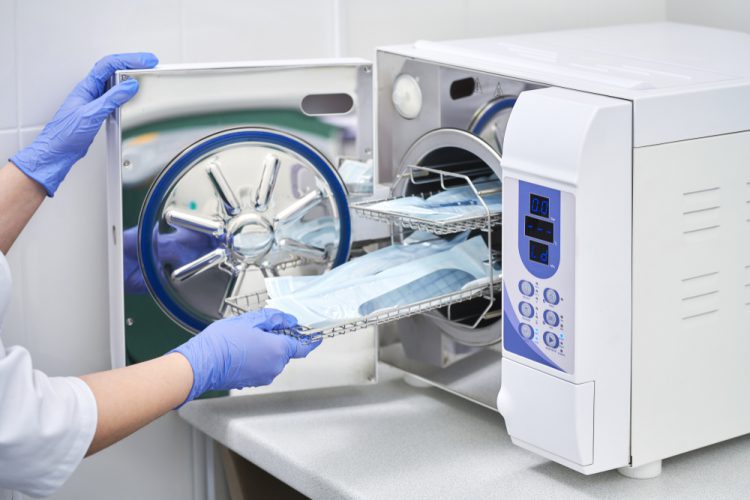Technology at Basil
Basil Dental is the most high-tech dental facility in Gurgaon. We keep upgrading ourselves with the latest technology in dental science. Our doctors are involved in multiple training and research programs
Digital X-rays Sensors
X-ray is the starting point for diagnosis or screening of a variety of health issues including dental issue. Traditional X-ray technology has easy availability to the medical community as it has a low cost. It’s a harmless, noninvasive and quick technique to diagnose issues effectively. Since 1900s traditional X rays are in the picture. It uses film to capture images of the body’s internal structures. With the addition of computer technology, digital radiography has become a much more efficient, cost-effective, and an even safer method of producing diagnostic images. With traditional X-ray, we need to wear a big lead apron or a shield to protect the surrounding area of the body from receiving unwanted X-ray radiation. While traditional X-rays are considered safe, digital X-rays produce 80% less radiation than traditional.

Which means it is highly unlikely to receive unnecessarily or scattered radiation. Digital radiography is more cost-effective as compared to traditional X-ray as the cost of a film comes down to the fact that the film is expensive. One more big advantage of digital X-ray is that you no longer have to keep count of how many pictures you’ve taken. Storage of digital x-ray is also very easy with the film it is difficult to store the X-ray films. Also, retrieval becomes easy with the digital system, which again makes it possible for the dentist to do-follow up years later. A good image quality helps the dentist to diagnose the issue correctly. Not only it give the results within seconds, but the image can also be easily resized to enlarge hard-to-see potential issues without distorting or degrading the quality of the image.

Digital Low Radiation DENTAL X-Rays (DC) Vs Traditional X-Rays (AC)
At Basil Dental, we take every little care about your health and use the lowest radiation DC X-Rays. Alternatively, AC X-ray machine is the cheapest method to produce X-rays. AC machine uses the alternating current from the electricity provider. The X-rays that are produced, each begin too weak to use and grow to proper strength before they decrease again to being too weak.
The alternating current produces low energy photons in high quantity as compared to DC which are readily absorbed by the patient, so the more homogeneous beam of higher energy photons produced by DC constant potential units will reduce patient exposure. DC also produces good film quality. Smooth and consistent X-rays are produced in DC powered X-ray machine.
Direct electric current is used to power the X-ray tube head in DC powered machine. These constant potentials (DC) machines, neither changes direction nor the intensity making it a steady supply of power. Another important consideration in DC is very low exposure times used in digital radiography. This property can be illustrated using an example exposure time of 0.04 seconds (which is a very low setting).
To conclude, you will experience the following benefits when switching to a DC X-ray unit:
Consistent Images.
Lower Exposure to Radiation.
Constant kV Values even with fluctuating mains.

Electronic apex locator
Electronic apex locator helps in complete disinfection of the root canal system. To ensure the success of root canal treatment complete debridement of the pulp tissue, necrotic material and microorganisms from the root canal are essential. This can only be possible if the length of the tooth and the root canal is determined accurately. The outcome of treatment of roots with necrotic pulps and periapical lesions is influenced significantly by the apical level of the root filling.
Traditionally, radiographs help in determining the point of termination for endodontic instrumentation and obturation. The development of the electronic apex locator has helped make the assessment of working length more accurate and predictable.
What Is an Autoclave?
Autoclaves are commonly used for sterilizing equipment.
Autoclave work on the concept of steam sterilisation under pressure which is much better than the earlier used technique of boiling.
Medical tools and equipment are placed inside an autoclave. The lid is sealed, the air is removed from the autoclave, and then steam is pumped into the vessel. Heat and pressure are maintained long enough to kill microorganisms and bacteria in order to sterilize medical tools. Medical autoclaves generally reach a temperature of 121–140°C (250–284°F) for at least 3 minutes but for up to 15-20 minutes.

